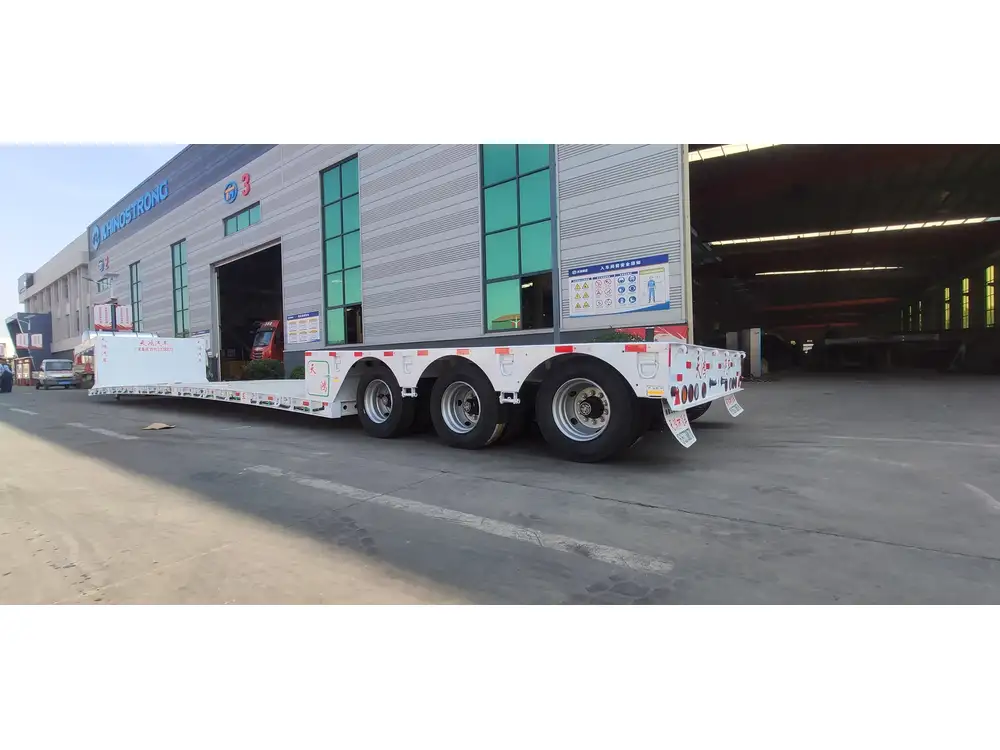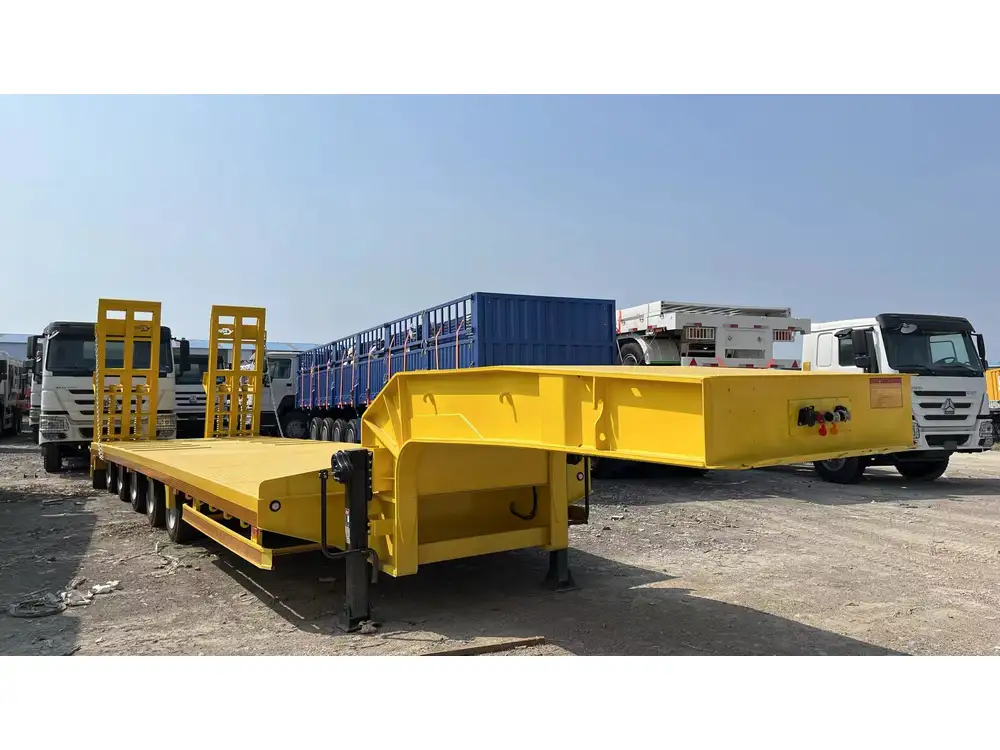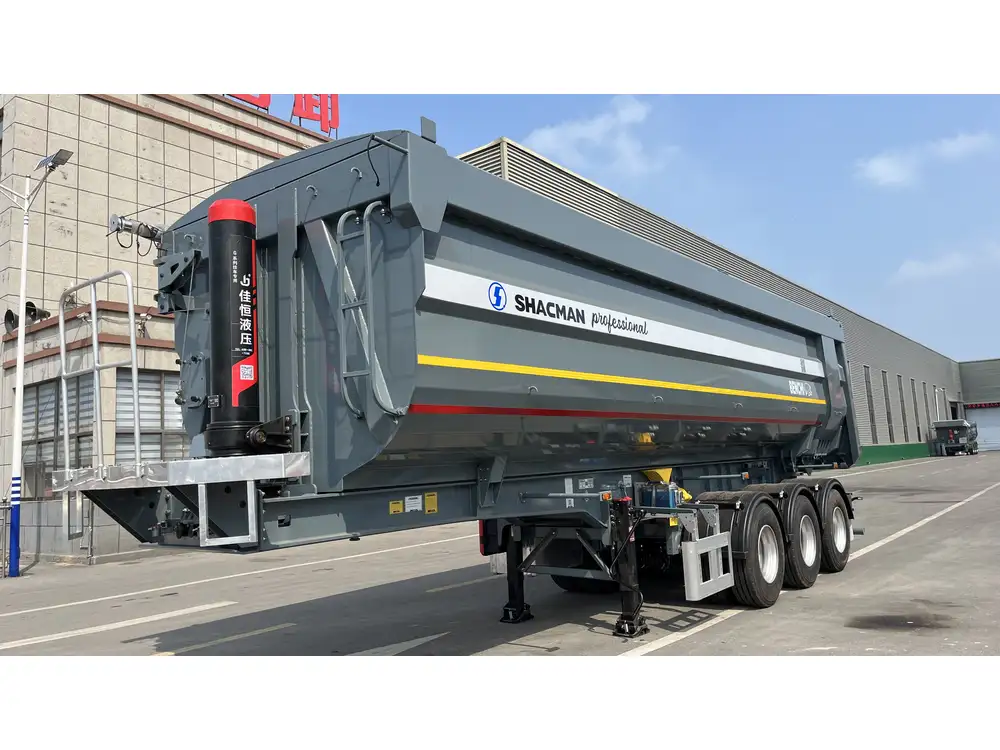Introduction to Tri Axle Skeletal Trailers
In the realm of heavy transportation, tri axle skeletal trailers hold a pivotal role. These specialized trailers designed for the transport of containers have revolutionized the efficiency and effectiveness of logistics. Not merely tools for transportation, they embody a synthesis of engineering precision and practical utility. Understanding the multifaceted nature of tri axle skeletal trailers is crucial for manufacturers, logistics experts, and business owners looking to optimize freight movements.
What is a Tri Axle Skeletal Trailer?
A tri axle skeletal trailer consists of a robust skeletal structure coupled with three axles. This design is integral for supporting heavy loads while maintaining stability and roadworthiness. The skeletal frame allows for the secure mounting of various container types, facilitating efficient loading and unloading.
Key features of tri axle skeletal trailers:
- Load Capacity: Designed to carry containers weighing up to 40 tons or more.
- Versatility: Compatible with standard ISO containers, enhancing operational flexibility.
- Stability: The tri-axle configuration distributes weight more evenly, reducing wear and improving handling.

Advantages of Tri Axle Skeletal Trailers
Utilizing tri axle skeletal trailers in your logistics operation offers a myriad of advantages. Here are some key benefits:
| Advantage | Description |
|---|---|
| Enhanced Stability | The distribution of weight across three axles reduces the risk of tipping. |
| Increased Load Capacity | Supports larger loads due to its robust structure and design. |
| Efficient Container Handling | Facilitates quick loading and unloading of ISO containers, minimizing downtime. |
| Cost-Efficiency | Better fuel efficiency compared to heavier trailers, saving operational costs. |
| Durable Construction | Built with high-strength materials ensuring longevity and reliability. |
Application in the Transportation Industry
Tri axle skeletal trailers are widely used across various sectors, including:
- Shipping and Logistics: Primarily for container transport.
- Construction: Transporting materials and heavy equipment.
- Agriculture: Moving large quantities of goods such as grains or fertilizers.
Choosing the Right Tri Axle Skeletal Trailer
Selecting the right tri axle skeletal trailer requires careful consideration of several factors:
- Load Requirements: Evaluate the maximum weight and type of containers that will be transported.
- Compatibility: Ensure that the trailer is compatible with existing equipment.
- Regulatory Compliance: Verify that the trailer adheres to local transportation regulations.
- Maintenance Needs: Opt for trailers designed for easy maintenance to minimize operational disruptions.

Key Specifications to Consider
| Specification | Importance |
|---|---|
| Length | Typically ranges from 40 to 53 feet, depending on the container size. |
| Weight | Consider the tare weight of the trailer against payload capacity. |
| Axle Configuration | A tri axle configuration ensures stability and enhanced load distribution. |
| Material | High-strength steel or aluminum for durability and weight efficiency. |
Maintenance Tips for Tri Axle Skeletal Trailers
Regular maintenance is crucial to ensure the longevity and performance of your tri axle skeletal trailer. Here are some essential tips:
- Routine Inspections: Conduct thorough visual inspections of the frame, suspension, and axles to detect any wear or damage.
- Check Tire Pressure: Regularly monitor and adjust tire pressures to manufacturer specifications to avoid blowouts and uneven wear.
- Brake System Maintenance: Regularly check brake pads, lines, and fluid levels to ensure efficient braking performance.
- Lubrication: Keep all moving parts well-lubricated to avoid friction and reduce wear.
- Cleanliness: Regularly clean the trailer to remove debris that might affect performance.
Cost Considerations for Tri Axle Skeletal Trailers
Purchasing a tri axle skeletal trailer represents a significant investment. Understanding the cost implications can help you make an informed decision.

Purchase Price vs. Rental Costs
- Purchase Price: Typically ranges between $30,000 to $60,000, depending on specifications and customization.
- Rental Costs: For businesses not ready to invest, renting a trailer often ranges from $500 to $1,500 per month.
Long-Term Value
While the initial purchase price might seem steep, consider the long-term savings associated with fuel efficiency and reduced maintenance costs. A higher upfront investment in a durable trailer can lead to significant savings over time.
| Cost Aspect | Details |
|---|---|
| Initial Investment | $30,000 – $60,000 per trailer |
| Fuel Efficiency | Reduced fuel consumption saves costs in the long run. |
| Maintenance Costs | Plan for regular services; budget $1,000 – $2,500 annually. |
Common Issues with Tri Axle Skeletal Trailers
Like any mechanical equipment, tri axle skeletal trailers may face several issues. Here’s how to tackle some of the most common:

1. Misalignment of Axles
Symptoms: Uneven tire wear and difficulty in steering.
Resolution: Regularly check and align axles during maintenance checks.
2. Corrosion of the Frame
Symptoms: Visible rust and structural weaknesses.
Resolution: Apply protective coatings and ensure to wash theskeletals regularly to remove corrosive substances.
3. Brake Failure
Symptoms: Unresponsiveness or grinding noises when braking.
Resolution: Regular inspection and timely replacement of brake components are essential.

Innovative Features in Modern Tri Axle Skeletal Trailers
Manufacturers are continually innovating tri axle skeletal trailers to enhance functionality and performance. Here are some cutting-edge features gaining traction:
1. Advanced Load Monitoring Systems
These systems provide real-time data on load distribution, helping to enhance safety and prevent overloading.
2. Enhanced Aerodynamic Designs
Aerodynamically optimized frames are designed to reduce drag, resulting in better fuel efficiency.

3. Modular Frame Options
Modularity allows for easy customization and adaptability to different container sizes without requiring a complete redesign.
How to Maximize the Efficiency of Your Tri Axle Skeletal Trailer
Maximizing trailer efficiency not only improves productivity but also enhances profitability. Here are some strategies:
1. Optimize Routes
Utilize route optimization software to find the most efficient paths for deliveries, reducing fuel and time costs.

2. Implement Loading Standards
Establishing standardized loading procedures not only speeds up operations but also ensures consistent load distribution.
3. Training for Operators
Invest in regular training programs for operators on best practices for loading, driving, and maintenance.
Conclusion
Tri axle skeletal trailers represent the intersection of efficiency, capacity, and functionality in the transportation sector. Whether you’re a manufacturer, logistics manager, or business owner, understanding their structure, applications, and maintenance needs can greatly enhance your operational efficiency and bottom line. By choosing the right trailer and implementing best practices, you can ensure that your transportation needs are met with reliability and effectiveness.
This comprehensive knowledge equips you not only to evaluate your current fleet but also to make informed decisions about future purchases and upgrades. With the right information and tools at your disposal, you can significantly improve your logistics operations and pave the way for sustainable growth in the industry.



